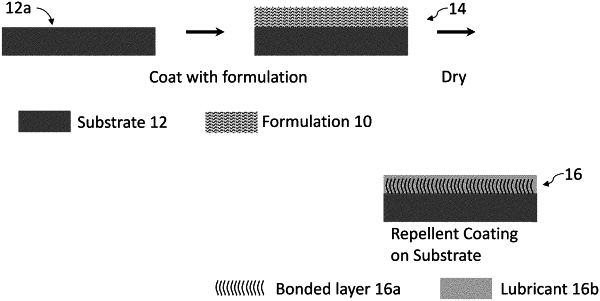| CPC A61L 27/34 (2013.01) [A61L 2420/02 (2013.01); A61L 2420/06 (2013.01)] | 26 Claims |

|
1. A process of forming a repellant coating on an ostomy appliance from a formulation comprising (i) one or more reactive components, (ii) an acid catalyst, (iii) a solvent, and (iv) a lubricant having a viscosity of from 2 cSt to 200 cSt as measured at 25° C., the process comprising:
drying the formulation on a surface of an ostomy appliance to substantially remove the solvent and to form a bonded layer on the surface with the lubricant stably adhered to the bonded layer,
wherein the one or more reactive components comprise silanes or siloxanes with one or more hydrolysable groups and having a molecular weight of less than about 1,500 g/mol, and wherein the one or more reactive components form the bonded layer by covalently bonding to the surface forming an array of compounds each compound having one end bound to the surface and an opposite end extending away from the surface.
|